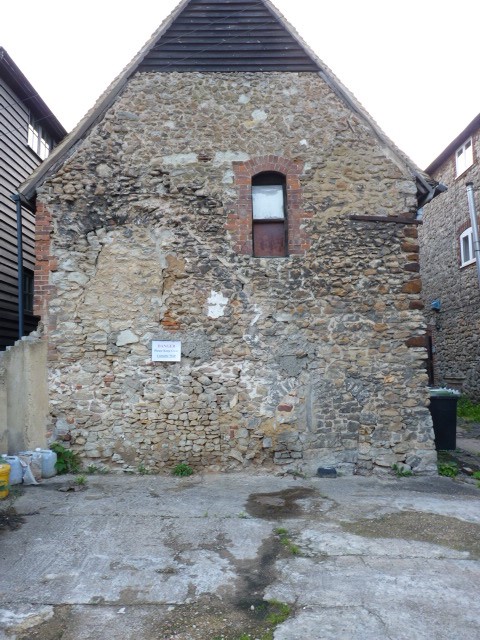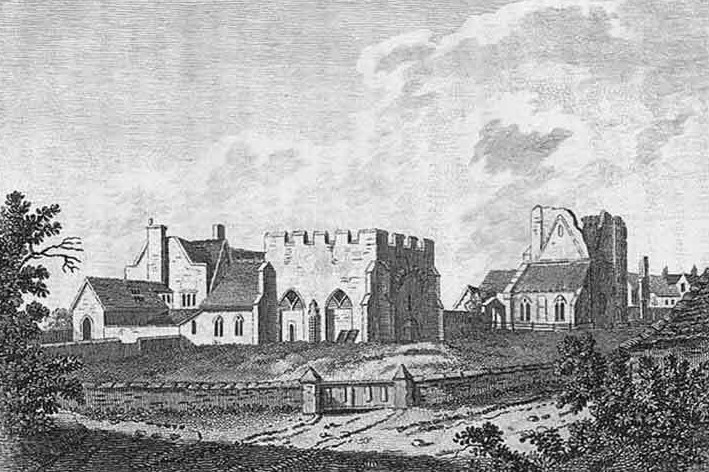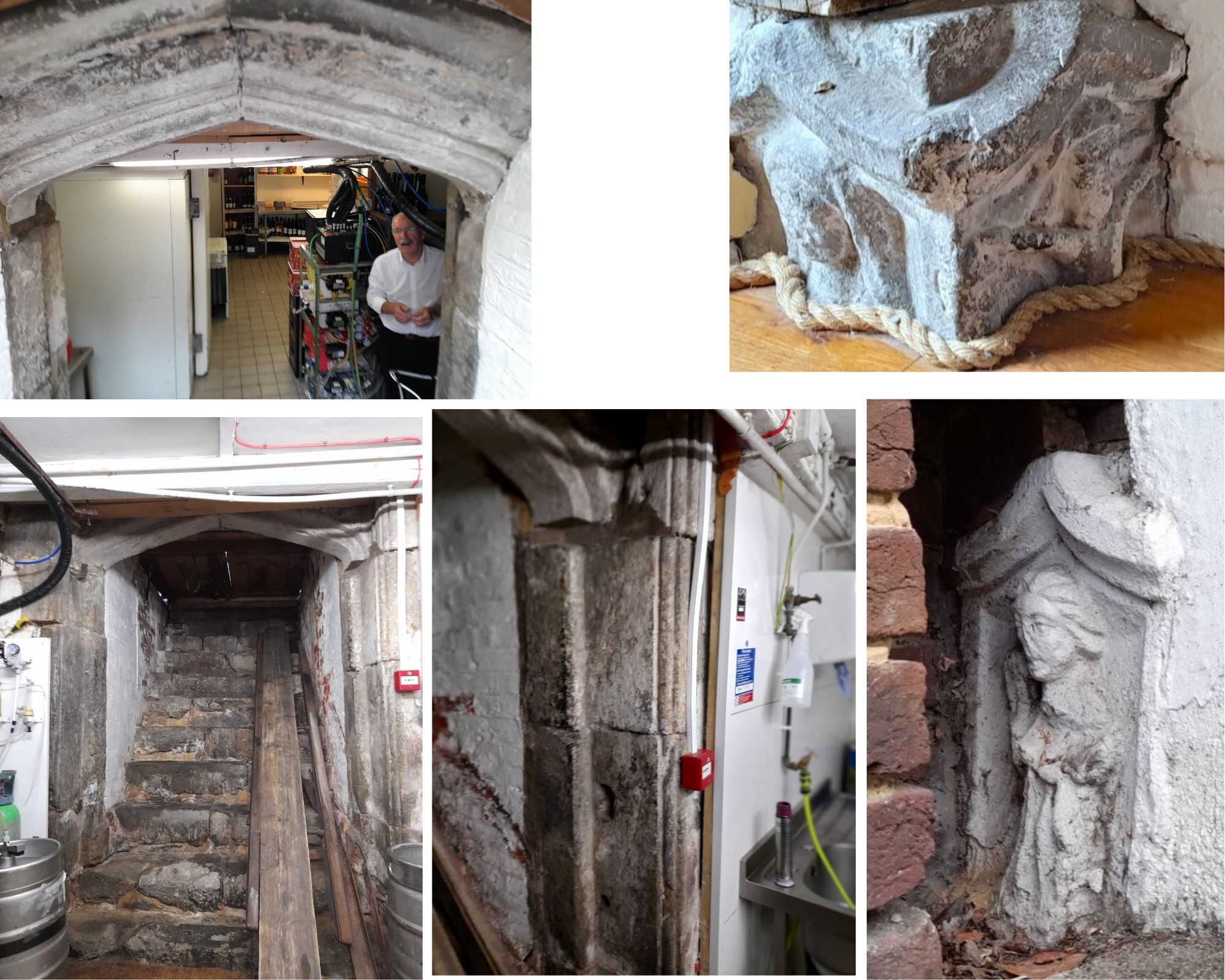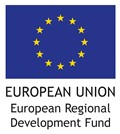Five Kings, One Queen, One Bishop, One Archbishop, and Two Traitorous Knights
The group of buildings here on the corner of High Street and Swan Street is of national importance and has a remarkable documented history. Its relationship to the Norman abbey of West Malling has been revealed and there is much exciting research to be done.
In 1066 William of Normandy acquired the throne of England by conquest at the Battle of Hastings. Initially the land was assessed, redistributed and reorganised, followed by an intense period of castle and monastery building. Many churches were enlarged, and Saxon landlords were replaced by landowners with Norman French names.
In 1077 the famous military and ecclesiastical architect Gundulf was appointed Bishop of Rochester, and subsequently began building St Mary’s Abbey in West Malling, believed by some authorities to be sited on all or part of the site of a Saxon Monastery (according to information held by the nuns of Malling Abbey). He is also credited with starting the building of St Leonard’s Tower at the same time, and probably the unique Norman building to the rear of 67 High Street (Source - Memories of Malling and Its Valley, C.H.Fielding).
For information on The Ancient House, West Malling, click here.

Starting with the first Abbess, named Avicia, the Abbey prospered, despite fire and plague, becoming one of the richest in England. In 1278 the Abbess claimed liberties granted by Henry III, including a market on Wednesdays and Saturdays together with ingfangtheif (the right to administer summary justice), granted by King John, and the right to hold fairs was granted by Henry III. The St Leonard’s Day Fair was still being held on November 17th until at least the end of the nineteenth century.

West Malling Abbey (18th century)
A market cross stood at the junction of Swan Street (then called Holyrode, or Holyrood, Street) and the High Street. The head of an early medieval holyrood, or crucifix, is shown on one side of a squared block which supports a beam under the medieval building at 57 High Street, currently Frank’s Restaurant. It is traditionally thought to be the head of the original market cross which was pulled down in the eighteenth century. There was a small prison or ‘cage’ in use on the little green on the High Street until the nineteenth century, so this area near the centre of West Malling was a focal point of the village until relatively modern times.


Tomb of Sir Robert Brett in St Mary's Church, West Malling
The Abbey is recorded as owning ancient vineyards on the North Downs at Halling, tanneries, a water mill, three West Malling inns and two blacksmiths’ forges, among other interests (Source – Land Deeds held by Malling Abbey). The Roman Catholic Church owned the Abbey until Henry VIII dissolved the monasteries between 1536 and 1541, confiscating their wealth, treasure, and lands. The brave Abbess in 1539 resisted until the last, but the Abbey was passed to the Archbishop of Canterbury, then into the holding of Gervase Pierrepoint, and later, Hugh Cartwright. Cartwright’s widow carried her interest to her second husband, Sir James Fitzjames, and later it seems to have come into the hands of Humphrey Delind – and thus to the Brookes of Cobham via Queen Elizabeth I in recognition of the Brookes’ services to her.
In 1603, following the death of Elizabeth I, English courtiers plotted to depose King James I and replace him with Lady Arabella Stuart, with the financial support of the Catholic Spanish government, and both Lord Cobham and his brother, Sir George Brooke, were among the plotters. Lord Cobham planned to collect a large sum of money, travel to Jersey, then meet Sir Walter Raleigh and divide the money and use it to finance and spread sedition. Sir George was executed, and Cobham was imprisoned, along with Raleigh, in the Tower of London. Malling Abbey was confiscated from the Brookes, and the holdings transferred to Sir Robert Brett, his wife, and son Henry. Robert Brett survived his family and died in 1620. He is commemorated by an elaborate tomb beside the altar in St Mary’s church. Following his death without heirs, his lands and manors were granted to John Rayney by James I, and the estate was later inherited by his son, Sir John Rayney, Baronet of Nova Scotia, and confirmed by Charles II in 1662.
The plaque is attached to this fine medieval hall house at 1 Swan Street (obscured by 18th century modifications) the deeds to which were transferred as part of the Abbey to Sir John Rayney of Wrotham, Baronet, his wife Dame Ellen and his son on 6th February 1627 (see the schedule of notable former owners below). In 1671 Isaac Honeywood Esquire of Hampstead bought this building with Malling Abbey, whilst Frazer Honeywood later restored and altered the Abbey, and converted it into an elegant home. The property stayed in the Honeywoods’ ownership until sold by Sir John Courtney Honeywood, Baronet, in 1809. In 1883 Mr E. Baldock bought the building which is still in the Baldock’s family’s ownership. They hold the original vellum deeds.
The corner building of this medieval group is a hall house, originally with a yard and well. It is attached and laid into the medieval buildings to the east. The building has been plastered over, and the jetty to Swan Street and the High Street was underbuilt with brick during the eighteenth or early nineteenth century. This alteration may have occurred when the building was sold to the clocksmith and his business partner, the tallow chandler, in 1809.
The remarkably high status of the early owners and the high quality of the door details visible on the upper floor suggest that this building is very important and of exceptional quality. The well was shared with the building to the north (57 High Street) which itself may have formed part of the original group sold at auction in the Swan Hotel in 1809. After world war 2, the owner of the then bakery at 51 High Street reported “Our handyman was sitting on the edge of the well and he fell in. We searched for him for two days but couldn’t find him. We put a slab over the well.”
The building to the north at 57 High Street, has a fine medieval moulded stone arch below the cellar trap doors, as well as a superb crown post roof. There was some early modernisation in the form of a 16th century inglenook fireplace replacing the original open hearth, and the medieval stone head of the market cross supporting an oak beam. The latter was probably a repair, but perhaps was a way of respecting and retaining this feature of the demolished Market Cross. A dwelling was constructed over the building’s yard which is now 5 Swan Street.


Top left: The cellar at 57 High Street
Top Right: Remnants of the Market Cross
The premises attached to the east of this building include a triple cruciform crown post roof and an oak tie beam approximately 25 feet long; such timber was reserved for royal or ecclesiastical use. A medieval inn sign, believed to be entirely authentic, depicting a swan painted on hand wrought oak was found nailed up as a repair to an inside wall of 57 High Street. This group of buildings probably formed the medieval ecclesiastical inn recorded as ‘Le Swan’ in the Abbey records. This would explain the extraordinarily high status of the owners.
Following is a list of this building’s owners as recorded in the original vellum deeds held by the Baldock family.
Sir John Walter, Knight
Sir James Fullerton, Knight
Sir Thomas Trevor, Knight
1627 (6th Feb) Sir John Rayney of Wrotham, Baronet,
his wife Dame Ellen and son
1671 (1st Feb) Isaac Honeywood, Esquire of Hampstead
Isaac Honeywood, Esquire (son of above)
Frazer Honeywood, Esquire of Malling Abbey
William Honeywood, Esquire and his wife Elizabeth
Sir John Honeywood (eldest son of William)
and his wife Dame Francis
Sir John Courtney Honeywood, Baronet
1809 John Godden, clocksmith
and William Williams, tallow chandler
(at this time the building was a tailor’s shop, house and yard)
1822 (1st Mar) Misses Margaret and Susanna Alchin (probably of New Barns)
(seem to have taken over Godden’s mortgage)
1843 Henry Godden, clocksmith (son of John)
1849 Miss Mary Ann Alchin
1883 Mr E Baldock
(Property has remained in Baldock family to date)
The property has also been indentured to other notable people, including two grooms to the Bedchamber of His Majesty Charles II, six clerks to the court of Chancery, and Sir Thomas Twisden.
Ashford & Tenterden Canterbury, Herne Bay and Whitstable Dover, Deal & Sandwich Faversham, Isle of Sheppey and Sittingbourne Folkestone, Hythe & Romney Marsh Gravesend & Dartford Maidstone Margate, Broadstairs & Ramsgate Rochester, Chatham & Gillingham Sevenoaks Tonbridge and Malling Tunbridge Wells






